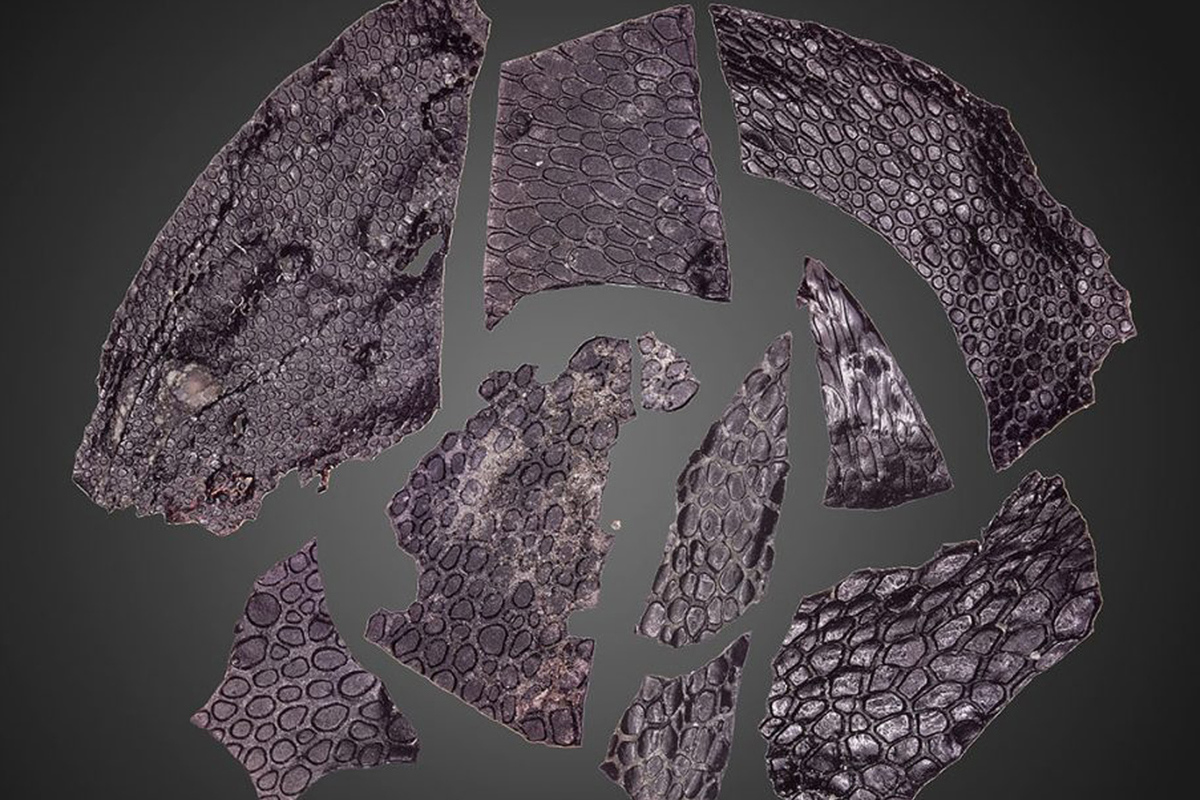The oldest fossil amazed paleontologists: the age of the find was almost 300 million years
[ad_1]

Reminds me of the skin of modern crocodiles
Paleontologists have identified and described the oldest fossilized reptile skin ever found. The fossil of the oldest known reptile, almost 300 million years old, found in a cave in the US state of Oklahoma, resembles the skin of modern crocodiles.
A team of paleontologists from the University of Toronto Mississauga discovered the fossilized skin of a reptile-like animal in a cave in Oklahoma. The fossil is estimated to be more than 20 million years older than the previous record holder, Arkeonews reports.
The find, believed to be at least 286 million years old, was discovered in the Richards Spur cave system, an area of Oklahoma uniquely suited for preserving fossil remains.
The soft tissue fossil is a rare find, made possible by a series of serendipitous events, and provides insight into a distant evolutionary past that predates both mammals and the earliest dinosaurs.
In caves, fine sediments and low oxygen levels help slow decomposition, said study lead author Ethan Mooney of the University of Toronto.
The limestone caves of Richards Spur in Oklahoma contain some of the most diverse and well-preserved Paleozoic fossils in the world. At that time, the caves were filled with oil and resin, which soaked the fossils and further protected them from decomposition.
Richards Spur Caves contains many fossils of Captorhinus aguti, a lizard-like reptile the size of an iguana. Most specimens are skeletal, but one C. aguti fossil described in the current biological study preserves part of the epidermis, the scaly outer layer of skin made of the same keratin found in human hair and nails. Paleontologist Ethan Mooney emphasizes the importance of developing a thick, waterproof epidermis for survival on land.
While studying these fossils, researchers discovered a series of thin specks that American biologist Thea Maho took to be bone fragments smaller than a fingernail and as thick as a human hair. However, microscopic examination showed that it was an exceptionally well-preserved piece of reptile skin. The three-dimensional fossil contains an inner layer of dermis, which is usually rarely preserved, as well as a tough epidermis with discrete bands of folded scales separated by a flexible “hinge” region without scales.
Although scientists can’t yet say with certainty which prehistoric animal the skin sample was found from, Maho and Mooney have an idea: Captorhinus aguti was a lizard-like animal known to have been common in the region during the Permian period. It had four legs, a tail, about 10 inches (about 25 cm) long, and fed on insects, small vertebrates and sometimes plants. The fossilized remains of this lizard’s skeleton were found at the same site, and some aspects of the skin sample are similar to those of these larger fossils.
Mooney notes that the newly described specimen is not only the oldest reptile skin ever discovered, but also the oldest amniote skin ever found. Amniotes, Arkeonews explains, are a subcategory of animals that includes reptiles, birds and mammals, so the find provides insight into a key point in animal biology.
Incredibly, the ~289-million-year-old specimen closely resembles modern crocodile skin, according to the researchers. Both living crocodiles and the ancient fragment of preserved epidermis have a pebble-like texture and a non-overlapping scaly pattern.
[ad_2]
Source link








